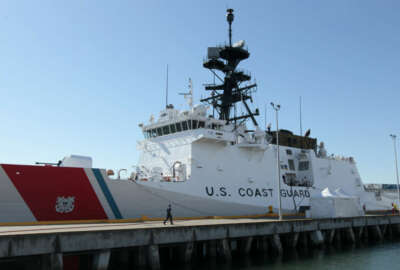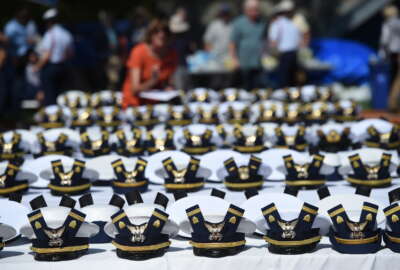Coast Guard’s new posture statement highlights service’s operational strains
Coast Guard's new operational posture statement is not a "pitch for money" but rather a realistic assessment of the Coast Guard’s readiness challenges.
Confronted with an expanding set of missions both domestically and globally, along with insufficient budgets, aging equipment and personnel shortages, the Coast Guard unveiled its first-ever operational posture statement that provides a look into how the service’s needs are increasingly at risk of outpacing its operational capacity.
“With our limited resources, it really is incumbent upon the service to take a hard look at how we operate, look at our priorities, understand where we can take risks, move to operate differently where we can to meet the needs of the American people across our 11 mission sets and across all the regions that we operate in. That is really what the operational posture statement is all about. It is our effort to communicate with our stakeholders and be transparent with the American people on how we will confront all of these challenges,” Vice Adm. Peter Gautier, Coast Guard’s deputy commandant for operations, said during the Center for Strategic and International Studies event on Oct. 25.
The new document will serve as an overview of the service’s missions and its global operational reach.
Gautier emphasized the operational statement is not a “pitch for money” but rather a realistic assessment of the Coast Guard’s readiness challenges.
First, the Coast Guard’s aircraft fleet is aging, with its planes logging two to three times more flight hours than any other military service. “That can’t last forever,” said Gautier.
The service’s cutters are also aging — its oldest cutter is 70 years old. In fact, the Guard has reached a point where it has fewer major cutters than it has had in decades, as aging vessels are retiring without being replaced. And the service can only fund about half of the necessary maintenance for its cutters.
And its small boats are also reaching the end of their service life.
“What we’re finding is, as we are operating our current fleet to accomplish missions at the same time recapitalizing to make sure that we have readiness in the future to do our missions, we quite simply do not have enough funding to do all of that at the same time. We really do struggle and our path is going to be really challenged unless we get the kind of budget support that we need to keep ourselves on a sustainable track,” said Gautier.
“Our budget is roughly $14 billion in any given year. We really need to become a $20 billion Coast Guard by 2033 and we are not yet on that kind of path to do that. Our capital investment budget, the portion of that budget that buys new things to replace these old things, has been about $1.4 billion. We need to immediately have that bumped up to $3 billion to keep us on that sustainable path.”
The Guard has requested $13.8 billion for fiscal 2025, with plans to expand operations in the Indo-Pacific, modernize cutters and boats, improve the service’s dilapidated infrastructure and overhaul its talent management system, which has not been updated in the last 75 years.
The service operates 259 cutters, 200 aircraft, and 1,600 boats, according to the service’s website.
The growing global role of the Guard now includes Arctic patrols, weapons and drug interdiction, and cybersecurity — that is in addition to the service’s traditional duties such as search and rescue operations, disaster response, and environmental protection.
“The Coast Guard has this can-do attitude. We will make it happen. We’re not so good about telling folks where we’re being stretched, where we’re getting brittle in terms of our readiness. We’re really turning that narrative to make sure that Congress and our stakeholders know the challenges that we’re facing and know what help we need. And actually the posture statement, I hope, will be helpful to indicate that we can’t be everywhere all the time,” said Gautier.
Copyright © 2025 Federal News Network. All rights reserved. This website is not intended for users located within the European Economic Area.







